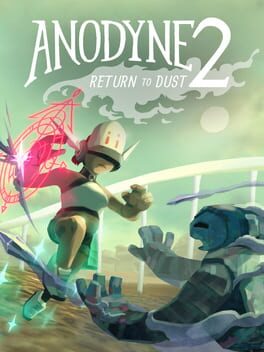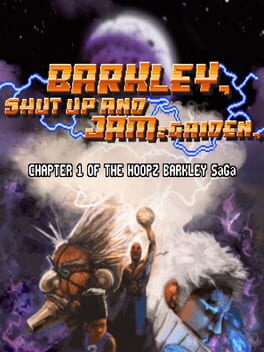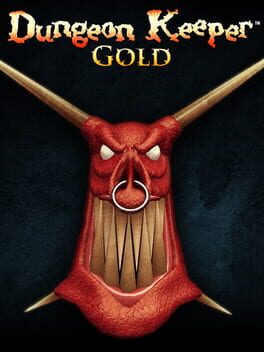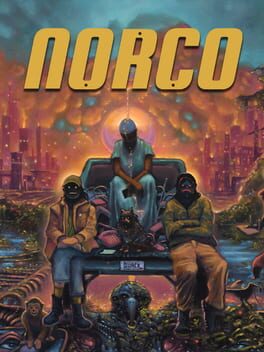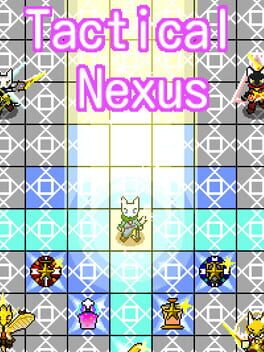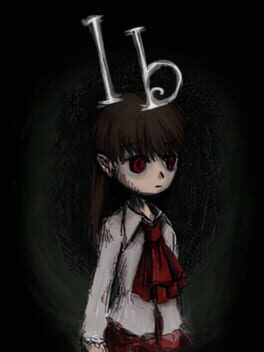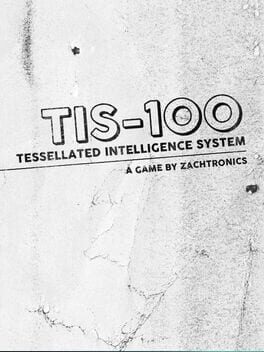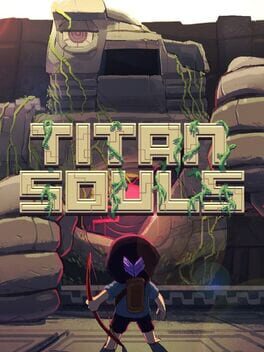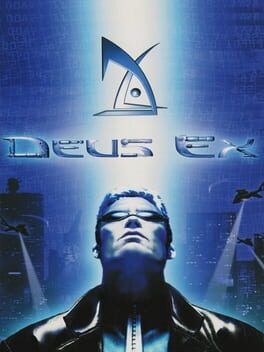nex3
BACKER
This review contains spoilers
High highs and low lows. The 3D art is bland, possibly because I have no nostalgia for the PS1 look and certainly because I have no love for the muddy desaturated color palette. On the other hand, the 2D art is as strong as it was in Anodyne 1, and indeed is made stronger by the benefit of multiple worlds each with a distinctive and appealing look.
The plot is achingly predictable--the god-analogue is revealed to be a cold ideologue who's strangling free will? Quelle surprise! But the smaller-scale character interactions are fun and the writing is mostly quite solid with a few great moments and fewer terrible ones.
I think the most frustrating thing about this is that its mechanical ambition extends beyond the capacity of its control scheme. Movement in both 3D and 2D sections of the game is clunky in a way that's surely an intentional riff on the consoles the game evokes, but conflicts painfully with the challenging maneuvers it occasionally demands. It's a question of suiting the design of the tasks you set before the player to the context in which the player acts.
The plot is achingly predictable--the god-analogue is revealed to be a cold ideologue who's strangling free will? Quelle surprise! But the smaller-scale character interactions are fun and the writing is mostly quite solid with a few great moments and fewer terrible ones.
I think the most frustrating thing about this is that its mechanical ambition extends beyond the capacity of its control scheme. Movement in both 3D and 2D sections of the game is clunky in a way that's surely an intentional riff on the consoles the game evokes, but conflicts painfully with the challenging maneuvers it occasionally demands. It's a question of suiting the design of the tasks you set before the player to the context in which the player acts.
1998
I remember being entranced by this back when I was a kid and video games came in box cardboard boxes that sat on shelves in real physical stores. I never played it, but I always wondered what it could be, how it would translate the most complex and devious dungeons I could dream up into the language of mid-90s computer games.
The answer is "as an RTS". The bones are all there: your workers harvest resources, you build buildings (or in this case "rooms") to unlock more and better abilities and units, and you eventually conquer the "lord of the realm" and win. It's also essentially an early tower defense, although one with enough flexibility that certain maps emphasize exploration and aggression more than preparation and defense.
I probably would have spent countless hours with this if I'd talked my parents into buying it (or one of its sequels) for me when I was young. As it is, I'm glad I finally dipped my toe in the water enough to see what's what but I think seeing the first few levels is all I really need.
The answer is "as an RTS". The bones are all there: your workers harvest resources, you build buildings (or in this case "rooms") to unlock more and better abilities and units, and you eventually conquer the "lord of the realm" and win. It's also essentially an early tower defense, although one with enough flexibility that certain maps emphasize exploration and aggression more than preparation and defense.
I probably would have spent countless hours with this if I'd talked my parents into buying it (or one of its sequels) for me when I was young. As it is, I'm glad I finally dipped my toe in the water enough to see what's what but I think seeing the first few levels is all I really need.
2022
I'm not usually a big Kirby fan but this was surprisingly solid. While the main game still mostly feels like coasting through a series of frictionless set pieces even on Wild Mode, each level's secrets and achievements ("reunite the ducklings with their mother!" "look at the view from the top of the rocket!" "don't get lost in the mall!") add a layer of appeal and interest that's been lacking in other Kirbies I've played.
The fact that the achievements are initially hidden is particularly clever, incentivizing the player to engage with the level not just as a series of challenges but as a site of play. I don't know if using the sleep ability on this pool chair will get me anything, but rewarding that is within the game's vocabulary so I'll act out this cute little tableau just in case.
The boss design is also shockingly appealing, something I'm not sure I can say about any other Nintendo game I've ever played. I repeatedly went back to fight bosses just for the joy of trying to hone my skills, and the variety of different abilities and their evolution throughout the game ensured that I could try different approaches each time. They aren't FromSoft-level depth, but that's not a fair expectation--clearly there were at least some design notes taken there.
The fact that the achievements are initially hidden is particularly clever, incentivizing the player to engage with the level not just as a series of challenges but as a site of play. I don't know if using the sleep ability on this pool chair will get me anything, but rewarding that is within the game's vocabulary so I'll act out this cute little tableau just in case.
The boss design is also shockingly appealing, something I'm not sure I can say about any other Nintendo game I've ever played. I repeatedly went back to fight bosses just for the joy of trying to hone my skills, and the variety of different abilities and their evolution throughout the game ensured that I could try different approaches each time. They aren't FromSoft-level depth, but that's not a fair expectation--clearly there were at least some design notes taken there.
2022
Tunic is a much better Fez than Fez and a much worse Dark Souls than Dark Souls. The combat has its moments, but they're spread thin between frustrating fights with clashing systems and exacting technical demands. But the puzzles... oh, the puzzles are so good. I spent my first four hours of this game barely "playing" in the traditional sense, only making enough progress to get more text so I could decode its pervasive script.
I felt like a genius once I cracked it, but there was so much more to uncover. My discord full of pals and I bounced theories and ideas back and forth among ourselves, eventually uncovering a close enough approximation of all there is to uncover to leave us basking in puzzle euphoria. Everything fits together so cleanly, all part of an organic whole, with each a-ha moment shedding new light on everything you already know.
There's plenty of room to play this game how you want, but if you want my recommendation: find a few friends, hop in voice chat, and just disengage from the combat challenges by enabling no-fail mode.
I felt like a genius once I cracked it, but there was so much more to uncover. My discord full of pals and I bounced theories and ideas back and forth among ourselves, eventually uncovering a close enough approximation of all there is to uncover to leave us basking in puzzle euphoria. Everything fits together so cleanly, all part of an organic whole, with each a-ha moment shedding new light on everything you already know.
There's plenty of room to play this game how you want, but if you want my recommendation: find a few friends, hop in voice chat, and just disengage from the combat challenges by enabling no-fail mode.
2019
What a strange distillation of a dungeon crawler this is. One health bar, two stats, and a whole mess of keys are your allies, but your only real enemy is your human inability to perfectly run the optimization problem each floor presents you with. Every battle does a known amount of harm and provides you with known rewards and your task is to choose the past that leaves you least harmed in the end.
It's a compelling loop , but it feels almost too much like empty stimulation of the urge to strategize and see numbers go up. When I'm succeeding, it feels fun but in the same way as randomly generating and solving 3-SAT problems might. When I'm failing, it feels like I probably made the wrong microdecision fifty moves ago and it's unclear whether I can ever get back on track.
Maybe the game expands into more depth later on. I'm not even sure if I hope it does: there's a nobility in its minimalism that I admire, even if I don't think I'll be returning to it any time soon.
It's a compelling loop , but it feels almost too much like empty stimulation of the urge to strategize and see numbers go up. When I'm succeeding, it feels fun but in the same way as randomly generating and solving 3-SAT problems might. When I'm failing, it feels like I probably made the wrong microdecision fifty moves ago and it's unclear whether I can ever get back on track.
Maybe the game expands into more depth later on. I'm not even sure if I hope it does: there's a nobility in its minimalism that I admire, even if I don't think I'll be returning to it any time soon.
2022
This review contains spoilers
The first two thirds of Elden Ring is masterful and would have easily earned five stars if it stood on its own. While it has flaws here and there, it's a downright brilliant integration of the logic of a Souls game into an open world that feels like it's bursting with life and fascination at every turn. The game shows you the most badass thing you've ever seen in your life, over and over again, hour after hour, then periodically breaks your heart for good measure. It takes all the cool build customization stuff from Dark Souls 2 and 3 and makes them even cooler, overflowing with exciting combinations of weapons and spells.
Everything beyond the capitol, though, feels half-baked. While a few of the endgame bosses are exciting in the way FromSoft fans have come to expect, many more feel like they lean into an aspect of Dark Souls 2 that was better left behind: difficulty for its own sake. The joy of FromSoft games is the curve from a challenge feeling impossible to the achievement of mastery over it, and that curve seems direly mistuned for many of the later bosses.
This isn't merely sour grapes: in other games, I came to to adore the very bosses I struggled most with. In Elden Ring, although I did eventually beat every boss, the lategame ones that posed the most challenge left a bitter taste in my mouth rather than the rush of victory I'd hoped for. Every win felt like I'd just rolled the dice enough times to avoid this or that unanswerable attack or camera hazard.
There is a challenge, I think, in designing bosses that remain engaging even for players who have explored everything in the game and are at an arbitrarily high level, not to mention players who have six previous FromSoft games under their belt. One approach for these fights is to throw out moves that require reading hundred-millisecond tells or executing frame-perfect dodges, but in leaning so heavily on the execution of the fight it minimizes the reward for learning it.
That's why I play these games: to learn to speak the language of a boss and to end up engaged in a dance that, by the end, feels almost cooperative. While there were fights in the latter third of Elden Ring that felt that way, they were few and far between, outnumbered by the fights that visibly could have been so much more fun than they were.
This game very clearly came in hot, and could have used a bit more time in development. Patches are already landing, and it leads me to wonder if the final portion maybe didn't get the attention it normally would have and if perhaps it may yet be improved. I hope it will, because I would love to feel the unmitigated love for this game that I do for other FromSoft titles.
Everything beyond the capitol, though, feels half-baked. While a few of the endgame bosses are exciting in the way FromSoft fans have come to expect, many more feel like they lean into an aspect of Dark Souls 2 that was better left behind: difficulty for its own sake. The joy of FromSoft games is the curve from a challenge feeling impossible to the achievement of mastery over it, and that curve seems direly mistuned for many of the later bosses.
This isn't merely sour grapes: in other games, I came to to adore the very bosses I struggled most with. In Elden Ring, although I did eventually beat every boss, the lategame ones that posed the most challenge left a bitter taste in my mouth rather than the rush of victory I'd hoped for. Every win felt like I'd just rolled the dice enough times to avoid this or that unanswerable attack or camera hazard.
There is a challenge, I think, in designing bosses that remain engaging even for players who have explored everything in the game and are at an arbitrarily high level, not to mention players who have six previous FromSoft games under their belt. One approach for these fights is to throw out moves that require reading hundred-millisecond tells or executing frame-perfect dodges, but in leaning so heavily on the execution of the fight it minimizes the reward for learning it.
That's why I play these games: to learn to speak the language of a boss and to end up engaged in a dance that, by the end, feels almost cooperative. While there were fights in the latter third of Elden Ring that felt that way, they were few and far between, outnumbered by the fights that visibly could have been so much more fun than they were.
This game very clearly came in hot, and could have used a bit more time in development. Patches are already landing, and it leads me to wonder if the final portion maybe didn't get the attention it normally would have and if perhaps it may yet be improved. I hope it will, because I would love to feel the unmitigated love for this game that I do for other FromSoft titles.
This review contains spoilers
This game whips, figuratively. I was enjoying it fine for the first couple hours until, during a boss fight, while panicking a bit and mashing buttons, I accidentally put in the input for a hadouken and it FUCKING WORKED. I just about lost my mind.
The real strength of this game isn't its clever nonlinearity (which isn't as nonlinear as it seems on the surface) nor its integration of dungeon-crawler logic into a side-scrolling arena (which feels increasingly rough as the game's space expands beyond its meaningful rewards), but in its layers of coyly concealed secrets. You could go through the entire game without realizing you can cast spells with fighting game inputs or any number of other quiet features hidden behind vague item descriptions.
The sense of possibility this produces is just as evocative as this game's lush last-hurrah-of-2d-console-games art. And the influence on the exploratory action-RPGs that defined games of the last decade couldn't be clearer. Although there are things I don't love about this game (the combat is only okay, the balance is frequently off-kilter) it's undeniably cool as hell and that counts for a lot.
The real strength of this game isn't its clever nonlinearity (which isn't as nonlinear as it seems on the surface) nor its integration of dungeon-crawler logic into a side-scrolling arena (which feels increasingly rough as the game's space expands beyond its meaningful rewards), but in its layers of coyly concealed secrets. You could go through the entire game without realizing you can cast spells with fighting game inputs or any number of other quiet features hidden behind vague item descriptions.
The sense of possibility this produces is just as evocative as this game's lush last-hurrah-of-2d-console-games art. And the influence on the exploratory action-RPGs that defined games of the last decade couldn't be clearer. Although there are things I don't love about this game (the combat is only okay, the balance is frequently off-kilter) it's undeniably cool as hell and that counts for a lot.
2012
Art galleries in video games are inherently cool because they have to contain real art. Some games will cop out and fill them with bland portraits or reproductions of real-world art, but not so for Ib. Everything on display here exhibits real creativity from kouri, and while not all of it is great art there are enough cool pixel-art sculptures or clever installation pieces that I was satisfied even just as a visitor to this gallery, let alone a player of the horror game that takes place within.
I was real excited for this game and real disappointed in the result. It's a collection of undeniably compelling parts that entirely fail to come together into an engaging whole. The combat is impressively tactile and the different weapons each play totally differently, but the randomization of them each run means players can't really specialize in the one that feels best. The Dead-Cells-esque run structure is a proven winner, but it's hampered by gating meta-progress behind frustrating and unpleasant bosses. The art is incredible, but it frequently makes combat illegible.
This tries hard to be a hip update that reframes a classic game in modern terms, but it doesn't understand what makes those modern games successful well enough to replicate it successfully.
This tries hard to be a hip update that reframes a classic game in modern terms, but it doesn't understand what makes those modern games successful well enough to replicate it successfully.
2015
I swore to myself, I SWORE I was going to put this game down for a while. But my pal @ciswoman thought she'd figured out why chalice dungeons weren't working (put my chalices in item storage then promptly forgot item storage existed), so I booted it for just a sec to see that she was right, and my wife saw and was like "please Natalie won't you please play more Bloodborne for my entertainment" like some kind of Victorian orphan figure begging for food so here we are. NG++ down the hatch.
Used the Chikage mostly this run. Only reason I didn't the first time, despite forcing katanas in every other game in my backwards introduction to the FromSoft canon, was its midgame placement and my total lack of bloodtinge. I didn't really this run either until the end, but this sword is so stylish I don't even care.
Used the Chikage mostly this run. Only reason I didn't the first time, despite forcing katanas in every other game in my backwards introduction to the FromSoft canon, was its midgame placement and my total lack of bloodtinge. I didn't really this run either until the end, but this sword is so stylish I don't even care.
2015
Possibly my least favorite Zachtronic puzzle game so far. It has all the claustrophobic space constraints of Spacechem without any of the visual excitement. The commitment to the bit, while laudable, really hampers to UI and debuggability of the game. While of course the programming language needs to be constrained to actually allow for puzzles, it (much more than, say, Exapunks) makes anything even moderately complex feel like a slog. By the time I got to the end, I no longer had it in me to put effort into optimization on any axis, which is a bit of a shame because when I'm in the flow I really do love coming up with galaxy brain solutions to these things.
2015
The hubris of naming a game "____ Souls" in 2015 is astounding.
Reducing a combat-focused game to a series of boss fights is not an intrinsically untenable concept, although it certainly raises the question of what value a large and barren overworld brings beyond adding a load screen between each attempt. The issue is that this design puts tremendous pressure on the design of the combat and the bosses to be stellar, since the game has nothing else to offer. And stellar these bosses are not.
Of the six fights I beat and eight I played before setting this game down in exhausted disgust, I'd consider every one of them to be a "puzzle boss" in the context of other combat-focused games. The challenge isn't in mastering the combat system, and sightreading is completely out of the question when a single hit is fatal. The challenge is always just engaging in trial and error until you find the cutesy little weakness every boss has and manage to eyeball the correct arrow angle in your half-second opening. It's the worst parts of the worst kinds of bosses you'd expect to see in a generic Metroidvania, not something worth showcasing as an entire game.
Reducing a combat-focused game to a series of boss fights is not an intrinsically untenable concept, although it certainly raises the question of what value a large and barren overworld brings beyond adding a load screen between each attempt. The issue is that this design puts tremendous pressure on the design of the combat and the bosses to be stellar, since the game has nothing else to offer. And stellar these bosses are not.
Of the six fights I beat and eight I played before setting this game down in exhausted disgust, I'd consider every one of them to be a "puzzle boss" in the context of other combat-focused games. The challenge isn't in mastering the combat system, and sightreading is completely out of the question when a single hit is fatal. The challenge is always just engaging in trial and error until you find the cutesy little weakness every boss has and manage to eyeball the correct arrow angle in your half-second opening. It's the worst parts of the worst kinds of bosses you'd expect to see in a generic Metroidvania, not something worth showcasing as an entire game.
2000
This is one of the most intensely Bush-era post-9/11 games I've ever played, so it's fully incomprehensible that it was published in June 2000. Although the mechanics are a little too ambitiously "play your way" to have any particular play style hold up well twenty years later, the writing and plot have aged beautifully. Set pieces like the massive Hong Kong map and the combat-free missions show impressive temerity: this game wants to tell its story, and to a large extent being a video game is subservient to that. The vibe of this game is "Metal Gear Solid 1.5" and I mean that in the most complimentary way possible.
